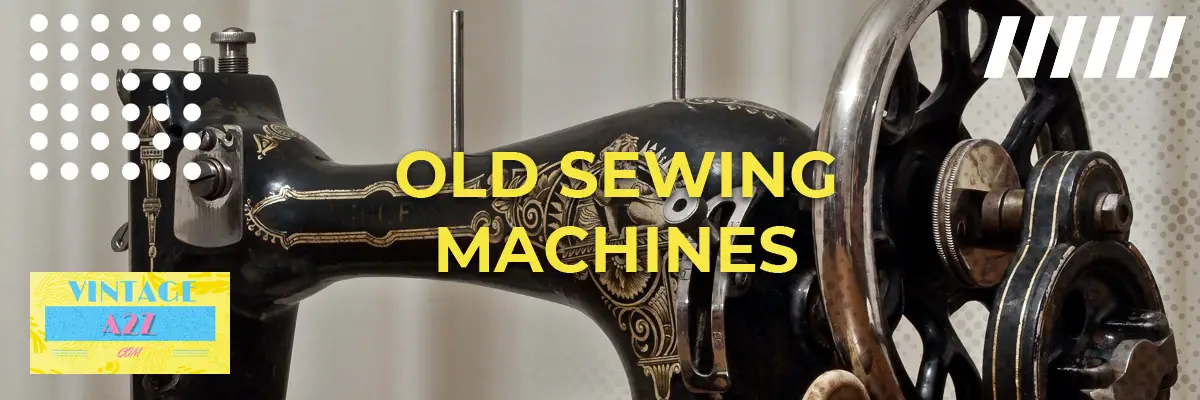The sewing machine industry made a significant stride in the mid-nineteenth century, the 1850s to be specific, where major inventions simultaneously developed, leading to infamous patent wars and the first patent pool.
Afterward, the golden age of sewing machines erupted with brands such as Howe, Singer, Jones, Wheeler and Wilson, Willox & Gibbs, Pfaff, Phoenix, Viking, White, and New Home.
Your old Montgomery Ward sewing machine is probably as old as the late 19th century!
Montgomery Ward Mail-Order business
In 1872, a traveling dry goods salesman Aaron Montgomery Ward founded the pioneering Mail-Order business. The business featured a catalog with a series of products, complete with descriptions, prices, and how to order.
These catalogs became popular with people living in rural areas for items that were unavailable locally. With a top-notch ‘satisfaction guaranteed or your money back policy, the Montgomery Ward Mail-order business eventually became a success.
This happened at the same time as the introduction of domestic sewing machines. Initially, sewing machines were industrial. Competitive marketing strategies were necessary in the sewing machine industry. Taking advantage of the sewing boom, Montgomery Ward Mail-order business included sewing machines in its catalog.
Montgomery Ward Companies
To further increase its booming business, the Montgomery Ward company issued bids for other companies that were also interested in producing sewing machines. After production, Montgomery would badge these machines under their brand name.
Companies that successfully worked with Montgomery Ward were Foley and Williams, The National Sewing Company, and an overseas Japanese company called the Happy Sewing Machine Company.
Foley and Williams
Foley and Williams manufactured the earliest models at the turn of the twentieth century. Their flagship model, The Oakland, had its fair share of questionable reviews and controversy. Despite the negativity, it still sold well due to the reputation of the Montgomery Ward catalog. It was also the cheapest at the time. It had a self-setting needle and a self-threading shuttle, and Montgomery Ward also gave it a five-year warranty.
The National Sewing Machine Company
The National Sewing Machine Company took over from the early to mid-twentieth century. Accredited with the production of sewing machines before 1955, the National Sewing Machine Company is responsible for models such as the Damascus, the Brunswick, the Windsor, and Amazon, which were uniquely hand-cranked.
However, in 1957, the company closed despite a merger with the Free Sewing Machine Company. This was due to an upsurge in the post-war Japanese sewing machine industry.
Happy Sewing Machine Company
Post-World War II saw the Japanese indulge in rebuilding economic activities. Among these was the venture into the sewing machine industry, which saw the fall of their American counterparts.
They were comparatively cheap to produce. Among the companies was the Happy Sewing Machine Company, which took over the National Sewing Machine Company in producing Montgomery Ward sewing machines. From 1955, they produced Montgomery Ward sewing machine models and received recognition for producing some of the best Montgomery Ward models. These include the Signature series, the Montgomery Ward sewing machine 1980, and Model 1984.
The Montgomery Ward sewing machine company stopped making sewing machines in 2001.
Dating your Montgomery Ward
The above companies give an overview timeline of Montgomery Ward sewing machines models produced in different periods. Unfortunately, it does not offer an exact sewing machine age, and the use of several companies led to records being misplaced.
Despite this, there are several ways to figure out the age of your old Montgomery Ward sewing machine.
Consult the manual
The easiest way to find the date your Montgomery Ward sewing machine was produced is simple by looking at the owner’s manual. If you happen to still have the manual on hand, scanning through the pages will reveal the date the sewing machine was manufactured.
Identify the model and serial numbers
If you don’t have the manual, the use of model and serial numbers is a common means in dating all old sewing machines. Montgomery Ward sewing machines are not an exception.
The model is on a plate behind the sewing machine or just indicated on the surface. The serial number might be alongside the model number on the panel, and in other models, they may be underneath the base. Armed with this information, you might be able find information about the model online.
Unfortunately, no one has maintained a list of serial numbers for Montgomery Ward sewing machines (not even the International Sewing Machine Collector’s Society (ISMACS)). So, you’ll have to consult forums for additional information that may help you determine the age of your sewing machine.
Sewing forums
Finally, if unsuccessful, consider taking part in sewing enthusiast or quilting discussion forums. Interested parties usually post questions on these platforms in regards to antique and vintage sewing machines. You might be lucky to find a few fellow sewing enthusiasts with detailed information in regards to aging Montgomery Ward sewing machines.
Frequently Asked Questions
How do I identify a Montgomery Ward sewing machine?
Most sewing machines featured brand names of the manufacturing company or model names, for example, Oakland, Damascus, Windsor or, Signature. Therefore, expect the Signature series to feature the name Signature written over it. Though, it will feature a description indicating it’s a product of Montgomery Ward Company.
How do I determine the value of my old Montgomery Ward sewing machine?
First of all, you will need to identify the model and serial number. Then search for similar models online. See what similar models are worth online on sites like Etsy, Ruby Lane, eBay, Craigslist, and Catawiki, as well as at professional antique dealers.
This will give you an idea of how much the Montgomery Ward sewing machine is worth. Currently, an antique or vintage Montgomery Ward sewing machine will set you back at most five hundred dollars, depending on parts present and condition.
Where do I get parts for my old Montgomery Ward sewing machine?
The best place to get parts for an old Montgomery Ward sewing machine is online on sewing enthusiast or quilting discussion forums. Since most models are not popular in the market, it can be hard to find replacement parts. However, such platforms give references and ideas on where parts are accessible.
Wrapping up
Despite their unorthodox production approach, Montgomery Ward sewing machines have stood the test of time to offer some highly valued models by collectors. Models such as the Signature Series Model 1980 and Model 1984 produced by Happy Sewing Machine Company are popular with collectors. They coupled Japanese simplicity and American caution for convenience.

